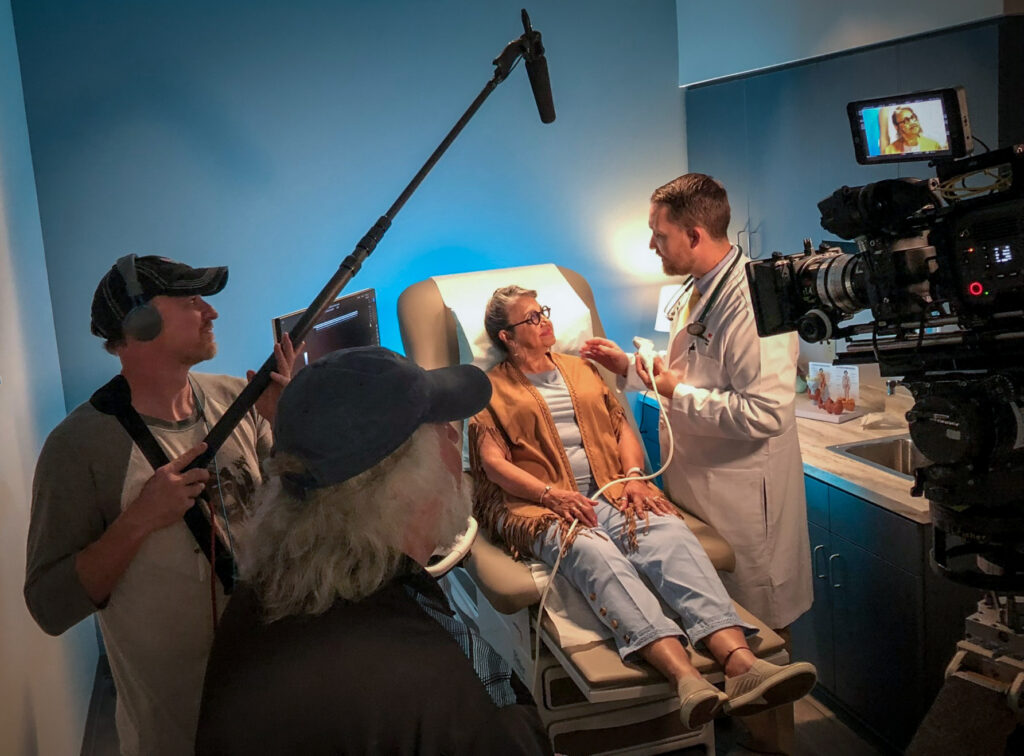From Confusion to Clarity: Building Strategic Partnerships to Bridge Healthcare’s Most Urgent Care Gaps

By Shawn Fernandez, Content Strategist at CRM Studios
“The greatest challenge in healthcare isn’t only treating disease, it’s ensuring patients truly understand their care, follow through, and achieve better outcomes.”
That gap between the care physicians provide and the outcomes patients experience is where the future of healthcare is being decided. And the stakes couldn’t be higher. With outpatient volumes projected to surge 18% over the next decade, post-acute care rising 31%, and a looming provider shortage of up to 124,000 clinicians by 2034, the healthcare system faces a structural shift that demands new solutions.
One truth is becoming clear: patients can’t benefit from care they don’t fully understand. And in a world where 95% of people retain information from video, compared to only 10% from text, the medium of video is no longer a “nice-to-have.” It’s a strategic imperative.
This is where healthcare leaders must reimagine their partnerships; not simply with tech companies, consultants, or device manufacturers, but with storytellers who can translate complexity into clarity at scale.
The Healthcare Transformation Landscape
Outpatient & Post-Acute Care: The New Frontlines
According to the Sg2 Impact of Change® Forecast, outpatient care will dominate the next decade. By 2035, 6.03 billion outpatient visits will shape the majority of care delivery. Meanwhile, recovery will increasingly shift into homes and communities, placing post-acute care at the center of patient experience.
For executives and practice leaders, this means:
- Facilities need medical video content to demystify procedures.
- Care teams need clinician training videos to ensure standardized protocols.
- Families need remote patient education to manage recovery effectively at home.
The Digital Engagement Imperative
Patients want to be active participants in their care. Research shows 90% of patients prefer digital tools for managing their health. Yet less than one-third regularly use online portals or communication platforms. The gap isn’t demand, it’s usability.
Healthcare video production sits at the intersection of patient engagement and comprehension:
- Explaining complex treatments in plain language
- Demonstrating medical device usage step-by-step
- Humanizing the patient journey with real stories
The Provider Shortage Crisis
The AAMC projects one of the largest clinician shortages in history. That reality forces healthcare leaders to ask: How do we extend the reach of providers without sacrificing quality?
One answer is asynchronous patient education—on-demand video resources that explain, reinforce, and repeat critical information without consuming provider time.
Bridging Doctor Care and Patient Outcomes
The core challenge in healthcare transformation is not only scaling services but scaling understanding.
Video provides a direct path:
- Remote patient education libraries empower patients before and after care.
- Health literacy improvement through simple, visual explanations boosts adherence.
- Value-based care communication becomes possible when patients truly understand their care plans.
- Patient communication tools like explainer videos ensure patients know when, how, and why to act.
The result? Improved outcomes, reduced provider burden, and better patient satisfaction scores.
Strategic Partnership Models for Healthcare Transformation
Healthcare systems need more than vendors—they need partners who understand both healthcare’s rigor and the power of communication
Four Models of Partnership
- Vendor Relationships (Immediate Needs) – Rapid deployment of standardized patient education videos.
- Preferred/Exclusive Partnerships – Branded medical video content integrated into portals.
- Joint Development Partnerships – Co-creation of patient engagement tools aligned with digital health platforms.
- Licensing & Joint Ventures – Scalable healthcare video production models shared across systems.
Who Benefits Most?
- Healthcare Systems investing in outpatient and post-acute expansion.
- Medical Device Manufacturers needing compliant training and education content.
- Healthcare Tech Companies requiring digital health content strategy for adoption and engagement.
Overcoming the Cost Objection: The ROI of Healthcare Video
For many executives, the first question about video isn’t “why” – it’s “how much?” Cost is valid, but focusing only on up-front investment risks overlooking its long-term value.
Healthcare video production is not an expense—it’s a strategic driver of growth, care quality, and patient trust.
ROI in Revenue & Growth
- Providers using video see up to 49% faster revenue growth.
- Healthcare video ads generate 41% higher engagement than text ads.
- Content reuse ensures long-term ROI across campaigns.
ROI in Quality of Care
- 60%+ of studies confirm improved outcomes from video-based education.
- Patients gain confidence, reduce anxiety, and adhere better to treatment plans.
- Lower readmissions translate into cost savings under value-based care models.
ROI in Trust & Loyalty
- Patient engagement strengthens when video builds empathy and trust.
- Testimonial videos act as digital word-of-mouth advocacy.
- Stronger relationships lead to higher patient retention and referrals.
Simply put: Video is the most cost-effective patient communication tool available today.
The Strategic Imperative for Healthcare Leaders
Healthcare executives often talk about “bridging the gap” between clinical excellence and patient adherence. The truth is, bridges aren’t built with more portals or paperwork, they’re built with clear, engaging communication.
That’s the role of medical video content:
- To educate patients asynchronously.
- To empower families with at-home care knowledge.
- To equip clinicians with training resources.
- To align systems with value-based care communication.
CRM Studios’ work in healthcare video production has shown that when patients understand, they comply. When clinicians are trained consistently, efficiency rises. And when digital health strategies are supported with video, adoption follows.
Closing Thought
The healthcare system doesn’t just need more technology, more data, or more procedures. It needs more understanding.
Understanding comes from stories, visuals, and clarity – the essence of video.
The leaders who embrace healthcare marketing strategy through video will not only improve patient outcomes but also strengthen trust, loyalty, and long-term growth.
The question isn’t whether healthcare needs video. It’s: How quickly can we leverage it to close the care gap?
